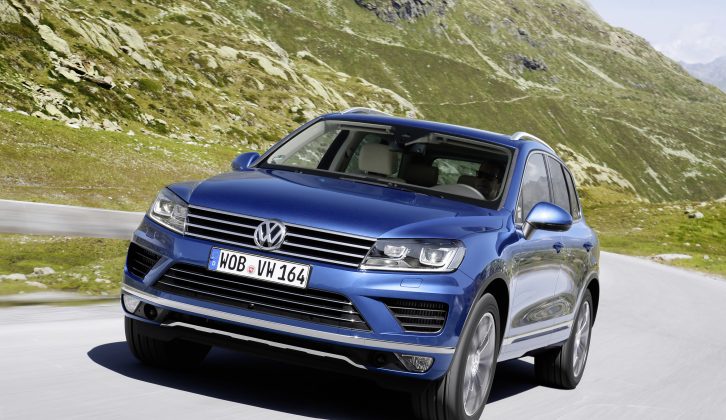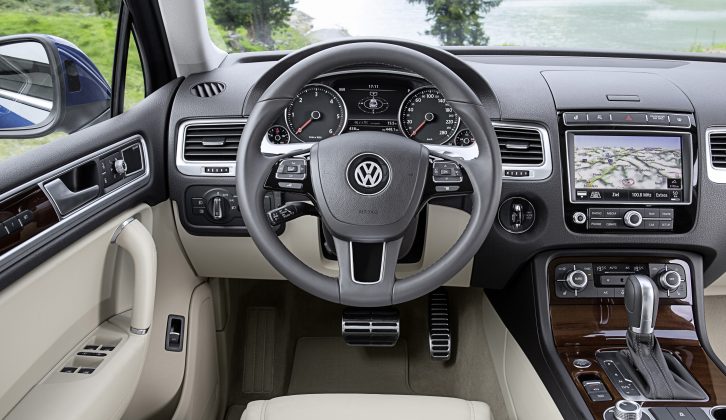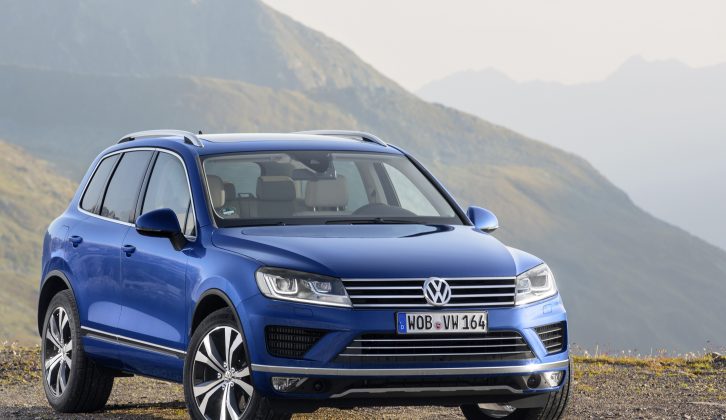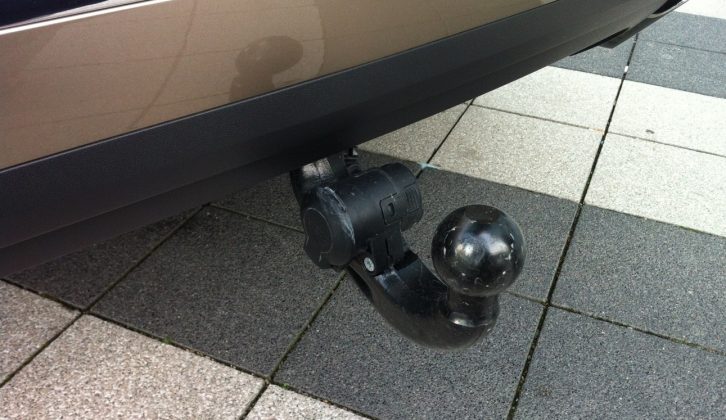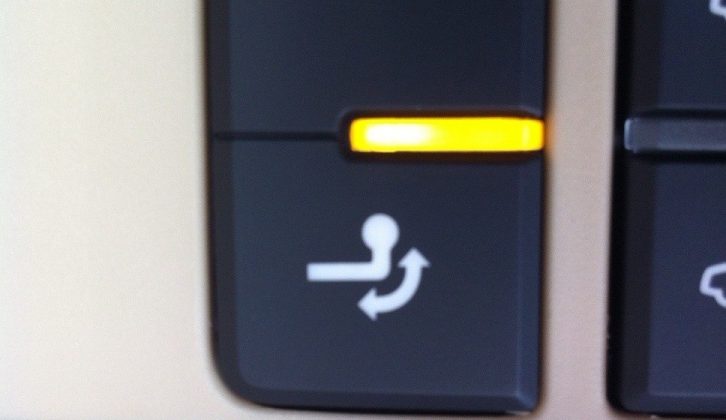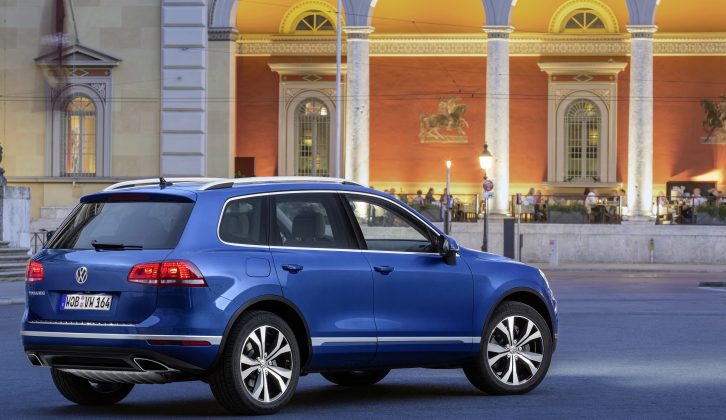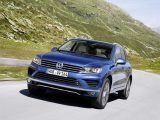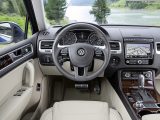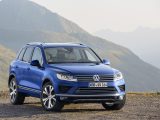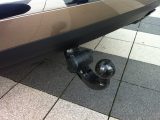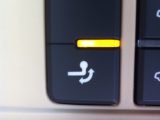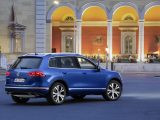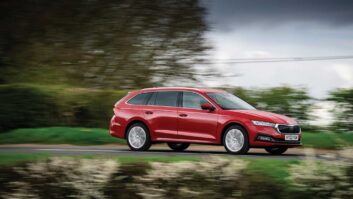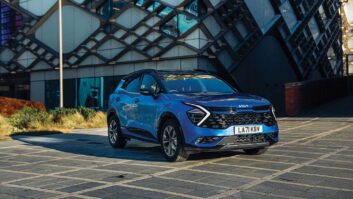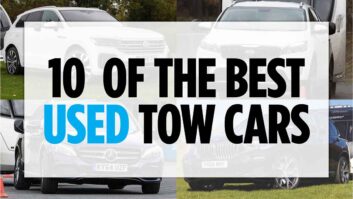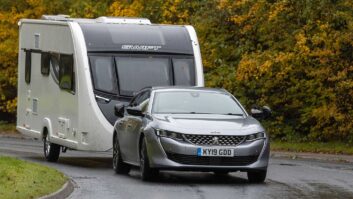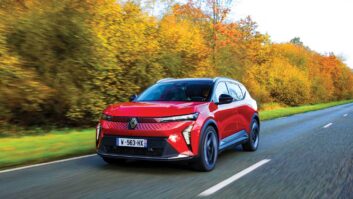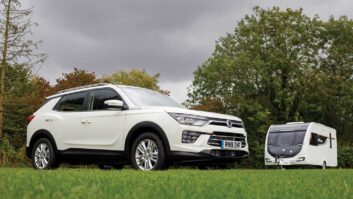This is the new Volkswagen Touareg. Honestly, it really is new, although I don’t blame you if you’re not sure. As facelifts go, this is about as subtle as it gets.
If you’re already a VW Touareg owner, perhaps you’ll notice the revised bumpers and grilles, new alloy wheel designs and the standard-fit bi-xenon headlights. Or perhaps, like me, you’d need to see the old car side by side with the new one to notice anything different about VW’s big 4×4.
The most important changes take place under the bonnet. When deliveries of the new Touareg start in November (order books are open now) all cars will have a 3.0-litre V6 diesel with either 204PS (201bhp) or 262PS (258bhp). Both engine variants now meet the Euro 6 emissions standard, thanks to the addition of a Selective Catalytic Reduction (SCR) system to clean up the exhaust.
Low-rolling resistance tyres and a coasting function on the eight-speed automatic gearbox mean the new car is more fuel-efficient than before, with both versions returning 42.8mpg on the combined cycle, according to official figures. The less powerful car emits 173g/km of carbon dioxide, while the more powerful model puts out 174g/km. That puts both cars in Band H for Vehicle Excise Duty (VED), with a standard rate charge of £205 at today’s prices. The off-road focused Escape model emits slightly more and uses a little more fuel and so jumps up a car tax band, but that’s only enough to make a £20 difference to the annual VED bill.
I had the chance to drive the more powerful version, and was interested to see what tow car potential it had. With 428lb ft of torque it has muscle to spare for towing, and should pull any sensibly matched caravan without breaking a sweat. And in this case, a sensible match means just about any tourer, thanks to a beefy kerbweight of 2185kg which gives an 85% match figure of 1857kg. The legal towing limit is 3500kg.
Certainly in solo driving the engine proved effortlessly strong, well matched to the smooth-shifting eight-speed automatic gearbox (there’s no manual option). Select ‘sport’ mode and the ‘box changes down reasonably quickly under acceleration. As you’d expect, there are paddles behind the wheel so drivers can take charge of gear selection for themselves.
All the test cars on Volkswagen’s launch event were fitted with the optional air suspension system (£2170 on SE and Escape models and £1590 on the R-Line). This was a mixed blessing. On the plus side, the ride proved comfortable and the adaptive dampers gave a choice of sport, normal and comfort settings. Cars fitted with this option also have an automatic levelling system, which is obviously very useful when towing. However, the downside is there was no chance to compare the air suspension with the standard steel springs.
Other features on this VW which should benefit caravanners include a Trailer Stability Programme to help prevent snaking, and ‘Area View’. As well as having a rear-view camera which is handy when reversing or hitching up, Area View uses cameras to the front and side of the car which can be used to give a plan view of the car when manouevring, alerting the driver to any obstacles which could be just out of sight.
The factory fit towball is also rather neat, staying out of sight when not needed then swinging down from under the back bumper at the touch of a button. It costs £760 including 13-pin electrics.
Changes inside the car have been slight. VW has added some metallic switchgear and a couple of new optional wood trims, along with two different leather upholstery options on the top-spec R-Line version. All front seats now come with lumbar support as standard.
There’s plenty of space front and rear, although as before there’s no seven-seat option. The rear seats are split 60/40 and slide back and forth on runners to trade rear legroom for extra luggage space. There’s no lip to load items over and the boot is a good square shape, with a generous capacity of 697 litres with the back seats in place. With the rear seats folded, luggage room increases to 1642 litres, but the seats don’t lie flat.
Prices now start from £43,000, rising to £47,500. That’s a slight increase compared with the old model. Volkswagen argues the extra cost is justified by the improvements in fuel efficiency and extra safety kit, including a system which automatically applies the brakes after a collision to reduce the severity of any further impacts. However, at this price point the VW Touareg faces some pretty stiff competition from the likes of the BMW X5, Land Rover Discovery and Mercedes-Benz M-Class.
I still prefer the Discovery, but even so the updated Touareg is a capable car. Just don’t expect it to be hugely different to the old one.
With 428lb ft of torque it has muscle to spare for towing
